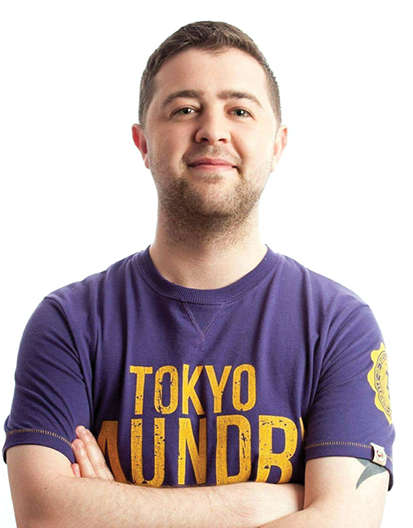"There, there!" a small boy shouts, pointing up into the sky.
Seconds later, as people run screaming for cover, a missile drops into view and slams into the ground with a massive explosion.
The target is an unidentified structure, among canvas tents in al Mawasi, the same designated humanitarian zone where the Israeli military is ordering people to go.
Asked by Sky News, the Israel Defence Forces (IDF) hasn't said why this location was targeted on Wednesday morning.
Mawasi is a heaving mass of displacement, with well over a million Gazans living in tents, temporary shelters or in the open air, forcibly evacuated from their homes elsewhere in the Strip, often many times over.
"We don't know where we have to go. Seriously," one woman says. "There is no safe place left to go to.
"No safe place so we don't know, seriously, we have nothing. We lose everything we have."
Strikes without explanation and aid chaos
The numbers in the camp are growing daily as Israel's military operation in northern Gaza continues.
However, despite IDF orders to move south, as many as 75,000 people remain in the north, some trapped, others unable or unwilling to move.
More than a thousand Gazans have been killed in the area since the operation began on 5 October, according to figures from the UN, many of them from missile strikes on residential buildings or temporary camps.
The IDF has provided very little detail about this operation and its objectives other than to say it is taking on regrouping Hamas fighters.
Unlike the early months of the war, the IDF has published almost no evidence to support strikes on alleged Hamas targets in northern Gaza.
Rescue workers and medics say they are being denied access to many parts of the north. Stray dogs and cats eat abandoned bodies in the streets.
Aid organisations claim they are regularly prevented from getting access to Jabalia, Beit Hanoun and Beit Lahia, towns in the north.
The IDF blames Hamas and armed gangs for hijacking aid convoys and stealing the aid to sell on at inflated prices. Drone footage proves this is happening. Much of Gaza is now lawless.
During a recent Israeli military embed, some Gazans leaving the north told an Israeli television journalist that they blame Hamas for the conditions.
"Hamas wounded me and killed me," one woman tells the journalist. "May God settle the score with Hamas," another says. Israeli soldiers are standing nearby.
Read more:
Hamas ready for ceasefire 'immediately', official tells Sky News
How a surgeon died in Israeli prison after being taken from Gaza
In October a spokesman for COGAT, the Israeli civilian-military border authority that co-ordinates humanitarian supplies, said that aid deliveries were not needed in the northern towns because there was "no population" left.
Testimony from multiple organisations on the ground, and from pictures filmed for Sky News, suggests otherwise.
"Conditions of life across Gaza are unfit for human survival," Joyce Msuya, a senior UN aid coordinator, recently told the UN Security Council.
"The daily cruelty we see in Gaza seems to have no limits."
'The General's Plan'
A former head of Israel's National Security Council has drawn up a proposal to put northern Gaza under siege with the aim of starving Hamas into surrender.
"All of Gaza Strip should be closed and Israel should prevent any entrance of any supply to Gaza," retired General Giora Eiland told Sky News.
Eiland's proposal, which is known as The General's Plan, has become notorious.
It has been shown to senior IDF commanders and Prime Minister Benjamin Netanyahu's office, but Eiland says it isn't being acted on.
Many observers disagree, saying that the IDF's actions in northern Gaza now bear remarkable similarities to the controversial General's Plan.
He said: "I would let everyone leave, even the combatants of Hamas, but after two weeks I would do only one simple thing: I would stop the supply of fuel, food and other important material to this part of northern Gaza... this is the most effective way to conquer the north of Gaza."
Eiland suggests aid agencies and NGOs help evacuate civilians from the combat zone; it is an unrealistic proposition because the aid organisations would refuse on the grounds that would make them complicit in IDF actions.
The Israeli government denies there are plans to permanently reoccupy northern Gaza, but a series of comments by senior officials in recent weeks suggest otherwise and bulldozers are systematically pulling down the ruins of many of the buildings that remain standing.
An Israeli general was recorded in early November telling journalists that "there is no intention of allowing the residents of the northern Gaza Strip to return to their homes". The IDF press office claimed his words were taken out of context.
Haaretz, a leading Israeli newspaper, recently published an editorial accusing the IDF of ethnic cleansing in the north.
One of its correspondents reported: "The area looks like it was hit by a natural disaster."
The recently sacked defence minister Yoav Gallant told hostage families that "there's nothing left in Gaza to do".
"The major achievements have been achieved," he added, but efforts to advance a ceasefire have stalled and there is no sign of a truce in the near term.

(c) Sky News 2024: Mass displacement in Gaza with people unsure where to go


 UK economy grows by 0.1% between July and September - slower than expected
UK economy grows by 0.1% between July and September - slower than expected
 COP29: UN climate summits 'no longer fit for purpose', warn leading figures
COP29: UN climate summits 'no longer fit for purpose', warn leading figures
 Davina McCall diagnosed with rare brain tumour
Davina McCall diagnosed with rare brain tumour
 UK weather: Snow and ice warning issued for parts of UK
UK weather: Snow and ice warning issued for parts of UK
 Swedish minister's staff insist on banana-free rooms due to 'weirdest phobia'
Swedish minister's staff insist on banana-free rooms due to 'weirdest phobia'
 Beaver supermoon to appear on Friday - with Leonid meteor shower this weekend
Beaver supermoon to appear on Friday - with Leonid meteor shower this weekend
 Gary Lineker says 'right time' to leave Match Of The Day as he hints at changes to show's format
Gary Lineker says 'right time' to leave Match Of The Day as he hints at changes to show's format
 Meeting the deeply radical anti-tax group that is 'growing in popularity'
Meeting the deeply radical anti-tax group that is 'growing in popularity'
 At least 10 dead after fire rips through retirement home in Spain
At least 10 dead after fire rips through retirement home in Spain